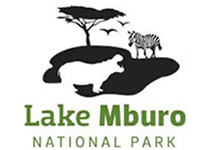Location
Situated between Masaka and Mbarara in Western Uganda, it is the only park to contain an entire lake. Beautiful and tranquil Lake Mburo National Park is situated in rolling hills and open grassy valleys. This lovely landscape also consists of four other smaller lakes where you’ll see impala, eland, waterbuck, klipspringer, zebra and buffalo.
Lake Mburo National Park, is located in south-western Uganda’s Kiruhura District, is the smallest savannah national park and the closest to Kampala. Covering 37,000 hectares and ranging in elevation from 1,220m to 1,828m above sea level, the park was established in 1933 as a controlled hunting area and upgraded to a game reserve in 1963.
In 1983, it became a national park, displacing the Banyankole Bahima pastoralists who had historically grazed their cattle there, causing resentment, especially after the expulsion was linked to political motivations during the Ugandan Bush War. The park is home to diverse wildlife, including zebra, hippopotamus, impala, and Rothschild’s giraffe.
However, habitat changes caused by invasive species, such as Acacia hockii, have disrupted grazing patterns. Despite efforts to manage these challenges, including controlled hunting and habitat restoration, tensions between wildlife conservation and local communities persist, with some animals, like hyenas, becoming problematic pests.
Legend
Two brothers, Kigarama and Mburo lived in a large valley. One night, Kigarama dreamt that they were in danger. When he awoke the next morning, he told his younger brother Mburo of his dream and said they should move. Mburo ignored this advice, but Kigarama wisely moved up into the hills. The valley flooded and a lake was formed, drowning Mburo. Today the lake is named after him, and the hills are called Kigarama after his brother.
The word mburo is similar to the “mboro”, the Runyankole name of the cassine tree which has a powerful aphrodisiac effect. One such tree, showing signs of bark and branch removal, may be seen close to the Kigambira Loop crossroads.
Climate
Lake Mburo National Park lies in a rain shadow between Lake Victoria and the Rwenzori Mountains, and receives an average of only 800mm of rain a year. Being near the equator, the rainfall pattern is bimodal, with the long rains occurring from February to June, and the short rains from September to December.
The rains are rather erratic and unpredictable, but most rain tends to fall in April and November. The average recorded temperature is 27.50C with daily variation ranging from 21.50C to 34,00C. July and August are the hottest months.
Topography
The Park lies between 1,219 and 1,828 m above sea level. High hills and rocky, eroded ridges characterise the western part of the Park; here deep valleys support dry forests found nowhere else. In the eastern sector, the rolling, wooded hills are intersected by wide, flat bottomed valleys which are seasonally flooded and drain into the swamps and lakes. The Ruizi river flows in a south -easterly direction and forms part of the western boundary of the Park. Lake Mburo and its associated wetlands eventually drain into Lake Victoria.
Geology
The Park is underlain by very ancient (more than 500 million years old) Precambrian metamorphic rocks which belong to the ‘basement system’. These rocks can be seen from the Zebra Track in the Park as outcrops or “tors”. The soils in the western uplands tend to be clays and loams, while those of the eastern lowlands are sandy.
